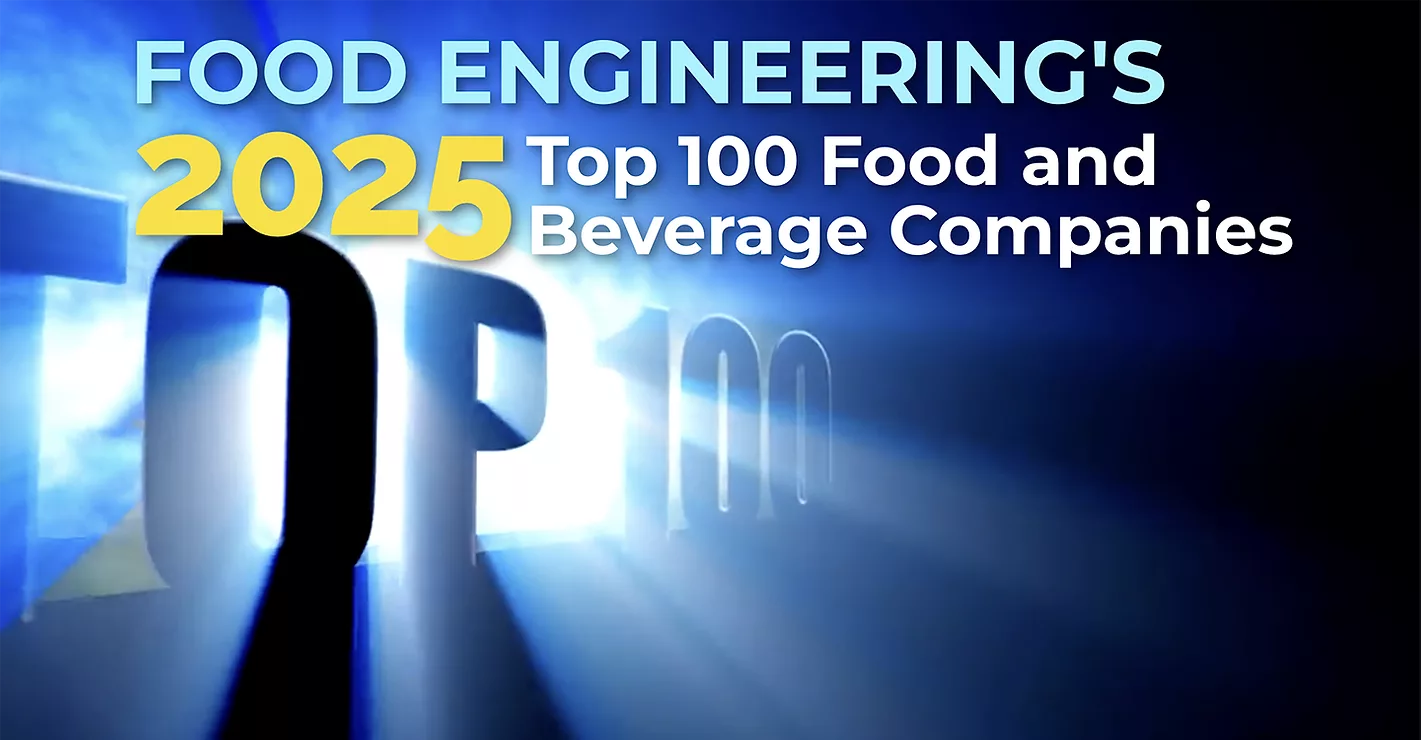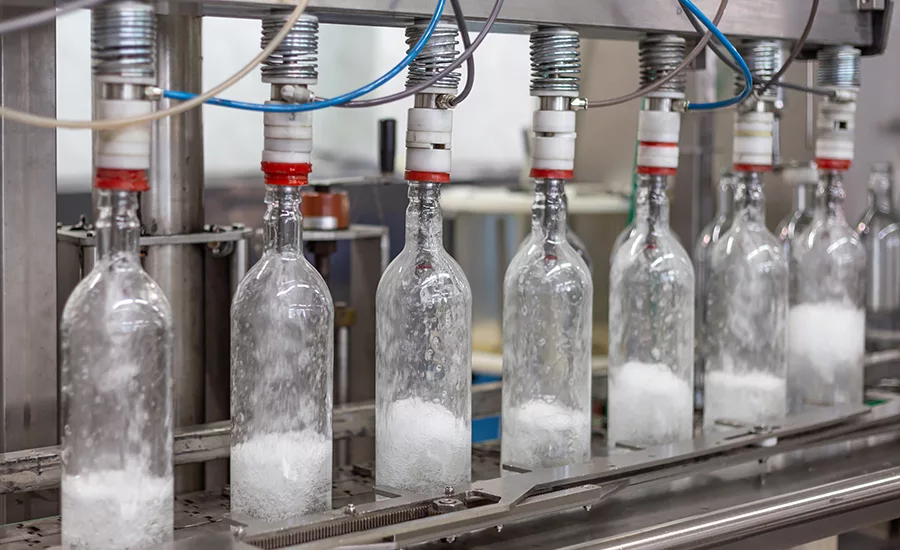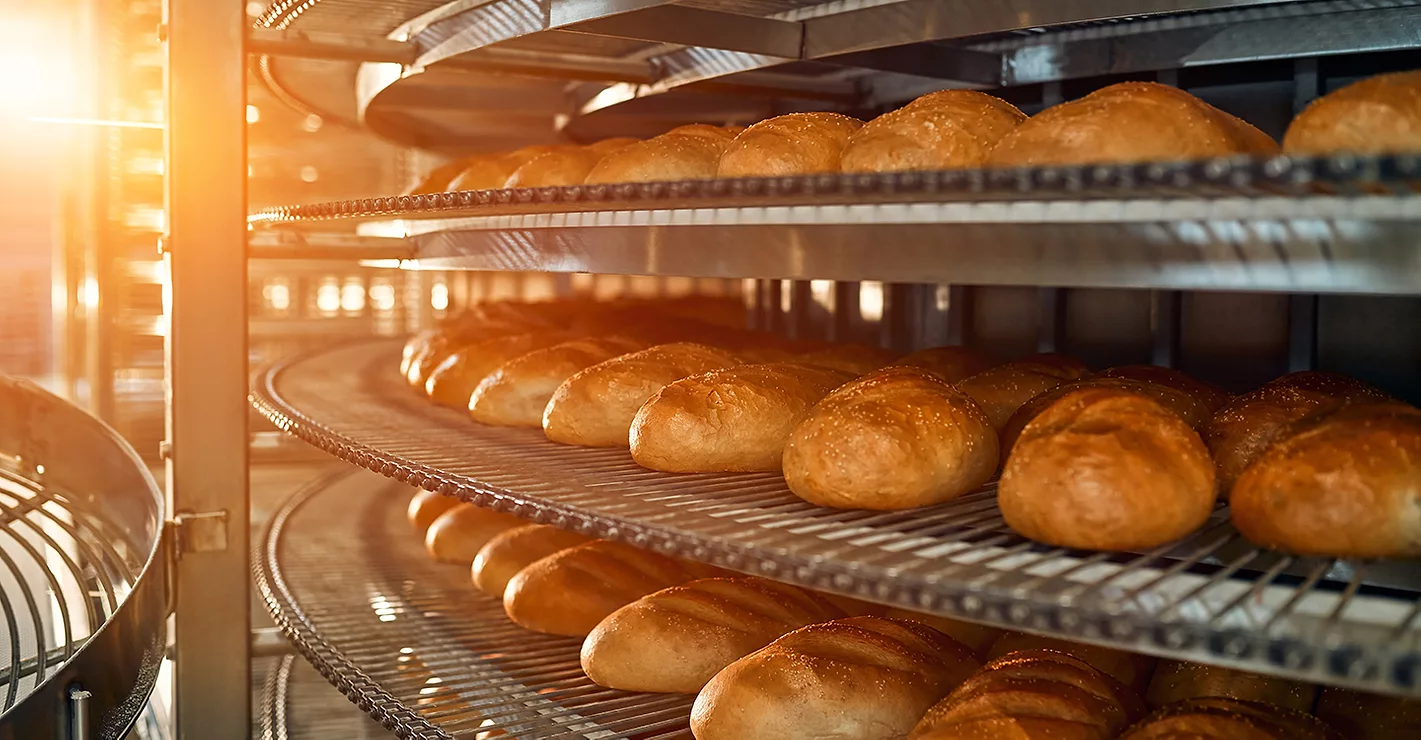Sustainability
Packaging Against Waste

New recyclable PA/PE film is also suitable for convenience foods.
Food packaging today is so much more than just protecting the individual product. It is true that the most important function, from the moment of packaging throughout transport, storage and retail, is to ensure that the contents arrive in private households in one piece. But design and material also have a large influence on buying decisions, because more and more people want food that comes in a more sustainable package.
Without any packaging, however, most foods cannot be transported, stored or sold and in their unpackaged state they would prematurely spoil. The protective wrapping keeps harmful influences like light, oxygen or humidity away and prevents soiling or damage. An extended shelf-life is a meaningful contribution to reducing food waste.
Along the entire value creation chain, globally more than 930 billion tons of food are thrown away every year. This figure comes from the last report by the United Nations Environment Programme (UNEP). The Swiss society’s food waste even goes so far as to say that on average, a third of all food is lost or goes to waste on its journey from the field to the plate. It is therefore part of the UN Agenda 2030 to cut the worldwide food wasting per capita in half until 2030. The authors of the Food Waste Index Report 2021 also assume that eight to ten percent of global greenhouse gas emissions stem from food which is not consumed. Packaging can help to curb this wastefulness.
Following the “Sustainable Development Goals” of the United Nations is also the SAVE FOOD Initiative, which was founded in 2011 by Messe Düsseldorf, the FAO and interpack. Their goal is to create public awareness for the issue and to develop counter strategies and solutions in cooperation with politics, society and industry. A special focus is placed on innovations from the packaging industry. Therefore, a current research project by SAVE FOOD is looking for answers to the question of how biodegradable food packaging could be made from food waste or from by-products of food production.
Combining Protection and Sustainability
But packaging is not only there to extend freshness and shelf-life. Consumers are increasingly demanding environmentally friendly packaging. It is supposed to be recyclable or made from sustainable materials, yet offer optimal protection for perishable products. And this means that especially food packaging today is a real high-tech product. For example, the company allvac Folien GmbH has developed an eleven-layer polyamide/polythethylene food wrap which is fully recyclable and for this has been awarded certification valid throughout the EU by the cyclos-HTP institute. “Offering no eco-friendly packaging solutions is no longer an option. The pressure on food manufacturers simply is too great.” says Andreas S. Gasse, PhD, CEO of allvac Folien GmbH.
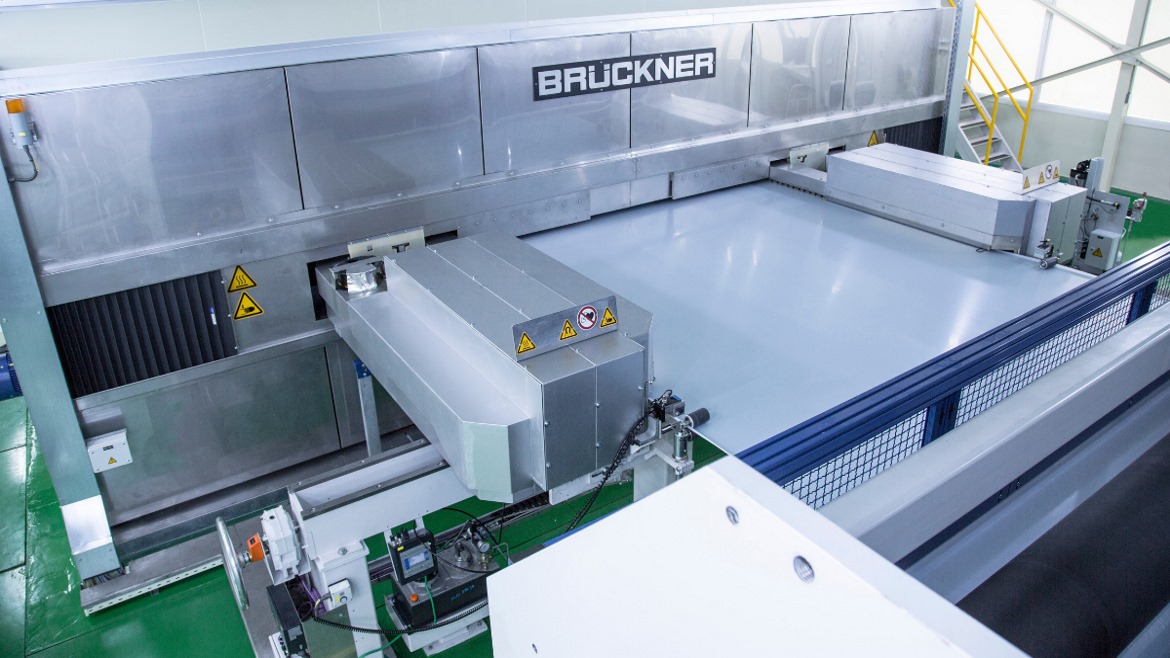 The demand for film stretching lines to produce films with bi-axial orientation from polyamide is increasing.Credit: Brückner Maschinenbau
The demand for film stretching lines to produce films with bi-axial orientation from polyamide is increasing.Credit: Brückner MaschinenbauFor aroma-proof food packaging, suitable materials are polyamide films with so-called bi-axial orientation, used for example to package oily, fatty foods or frozen foods. The demand for these films, which owe their special properties to a certain stretching process, continues to rise and so does the demand for relevant film stretching lines. One manufacturer of such lines, interpack exhibitor Brückner Maschinenbau, also focuses on greater efficiency while producing the films. From a mechanical engineering perspective, this is achieved through less use of resources, less consumption of energy and a “zero waste” policy in film manufacturing. Brückner has now developed matching concepts for factory lines.
Recyclates with Food Contact
Greiner Packaging already uses packaging solutions made of up to 100 percent PET recyclates, so-called rPET, and wants to demonstrate that this is what the food packaging of the future could look like. With the help of the heat-resistant material rPET HTS, in the future, recycled PET is said to be usable even for products that require sterilization through heat. The packaging manufacturer has also developed a self-separating cardboard-plastic-combination which is supposed to make recycling easier. This is achieved by the cardboard wrap, which stabilizes a plastic cup manufactured with thin walls, already separating from this cup by itself during the waste collection process. Cardboard and plastic can thus already be sorted into the correct flow of material during the first separation process, meaning before the packaging even reaches the recycling plant.
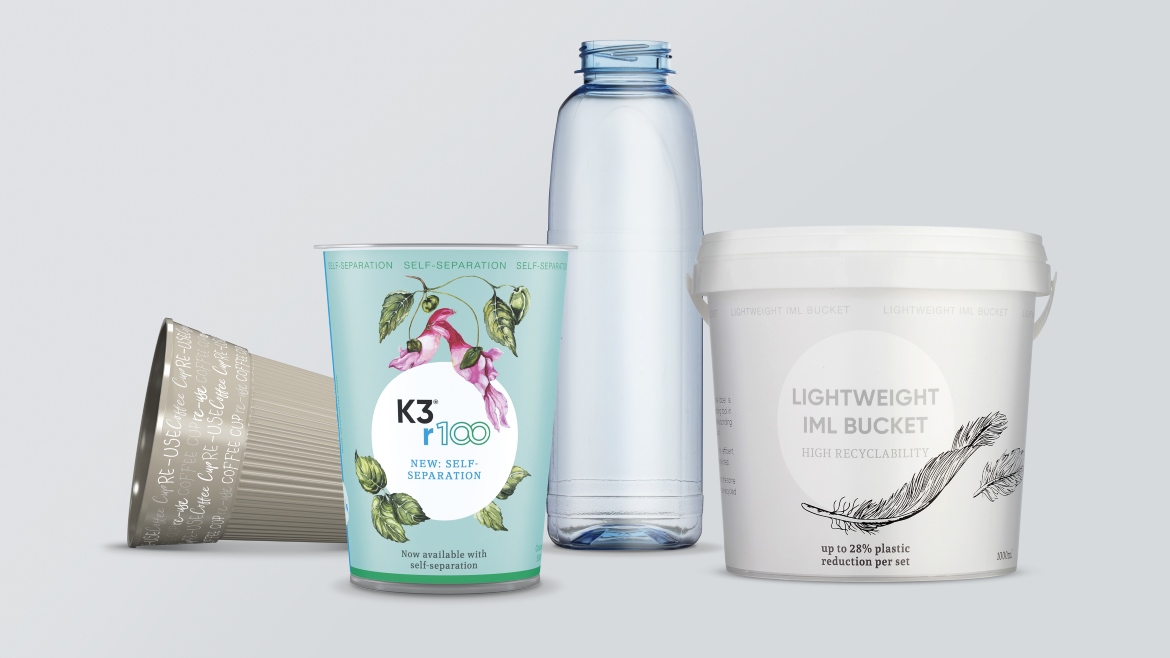 Consumers want more solutions that "reduce, reuse, recycle”. Credit: Greiner Packaging
Consumers want more solutions that "reduce, reuse, recycle”. Credit: Greiner Packaging
PET recycling is a long-established process and provides recyclates for new food packaging. But other plastics, too, can be reused to manufacture packaging for food. With the chemically recycled polyamide Ultramid Ccycled, for example, BASF offers new possibilities for the development of sustainable packaging especially for the fresh goods sector. The chemical group is exploring new opportunities to use plastic waste in its “ChemCycling” project and is further developing pyrolysis technology which is used to gain new resources from plastic waste which would otherwise be energetically recycled or sent to a landfill.
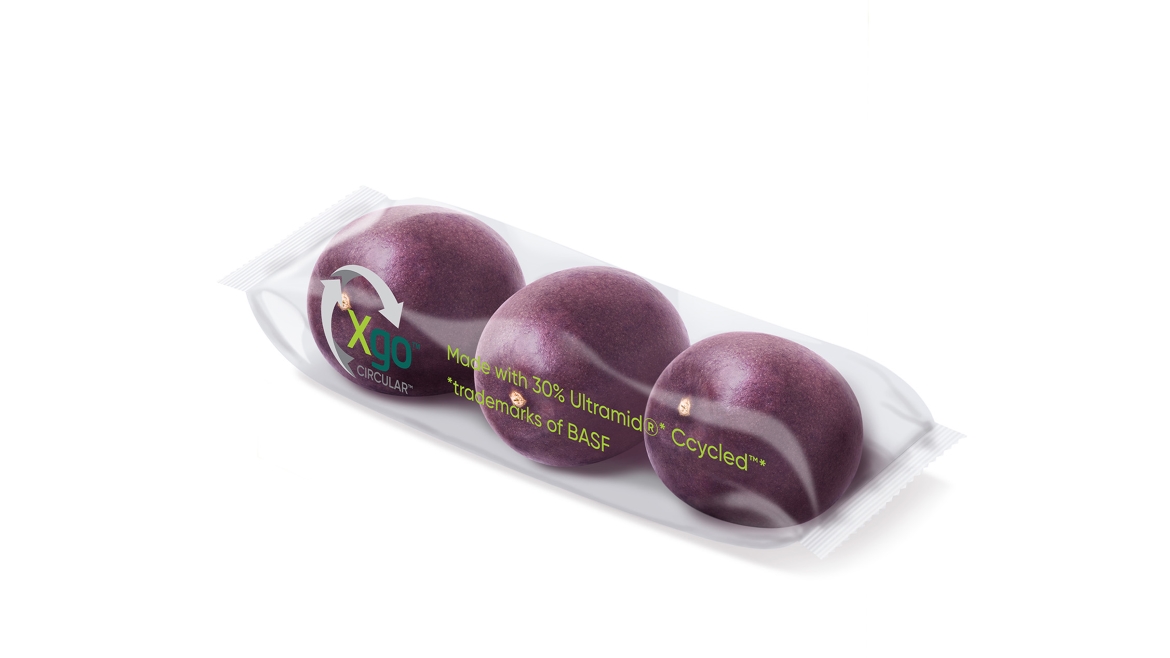 The adapted protective atmosphere inside the packaging maintains the quality of fruit for a longer time. Credit: BASF
The adapted protective atmosphere inside the packaging maintains the quality of fruit for a longer time. Credit: BASF
“A thermochemical process lets our partners gain recycled raw materials from old plastics, which are then fed into the BASF system. By looking at the mass balance, the raw material can be tracked to certain products, for example Ultramid Ccycled. This helps to replace fossil resources and is an important step towards a circular economy. As chemically recycled plastics are equal to new products with regard to their quality and safety, the range of sustainable plastics which can be used to package fresh goods is increasing”, says Dr. Dominik Winter, vice president of the European polyamide business at BASF.
Automating the Packaging Process
Not only the packaging producers, but the machine manufacturers have also long since adapted to the new demands. For example, recently all machines by Syntegon used for packaging food are able to also process sustainable materials. For one, carton erectors now also produce paper trays for biscuits as an alternative to conventional plastic trays. Vertical tubular bag machines are also processing both plastics and paper-based materials. They produce for example pillow bags for frozen goods and stand-up pouches or doy packs for dry foods.
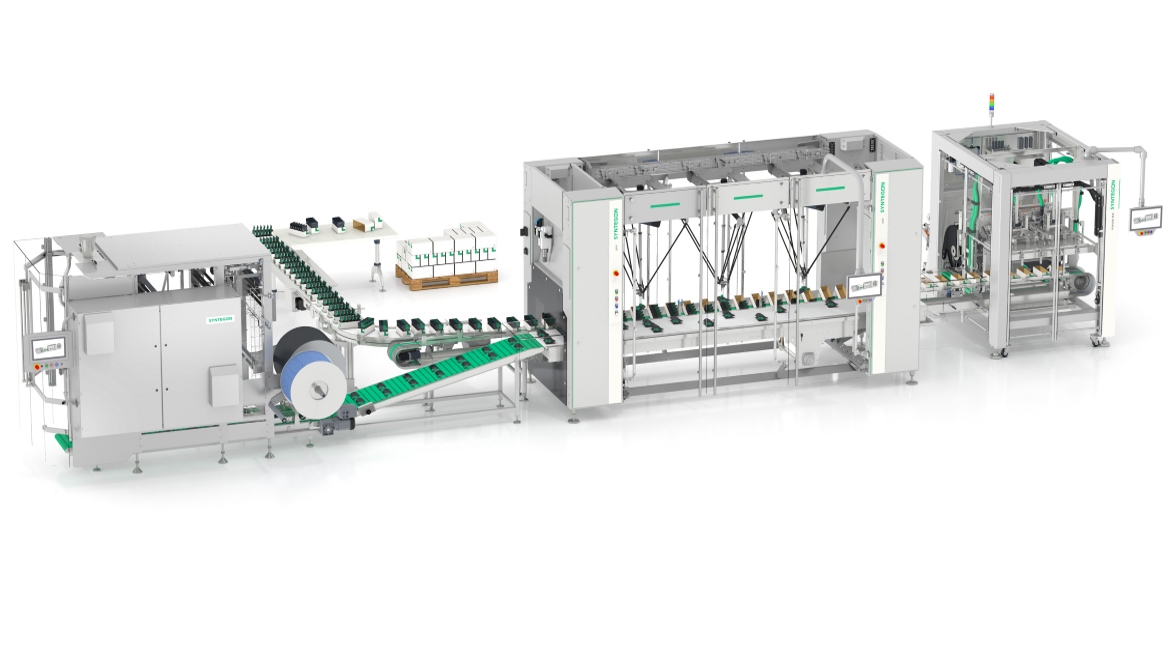 All Syntegon machines used for packaging food have recently been made able to also process sustainable materials. Credit: Syntegon
All Syntegon machines used for packaging food have recently been made able to also process sustainable materials. Credit: Syntegon
The shift within retail towards e-foods and the year-round need for fresh food place high demands on the flexibility of producers and manufacturers. One such solution comes from the Schubert Group and utilises robot based packaging machines. The robots were developed by the company itself and enable automation with optimum harmonization of packaging processes. They take fresh products, for example sausage or baked goods, directly from production and place them into primary packaging like trays, flat bowls or tubular bags. Often, special tools are necessary, which are adapted to the shape of the product and suitable for hygienic use in the food industry, and for which Schubert has developed its 3D printer Partbox.
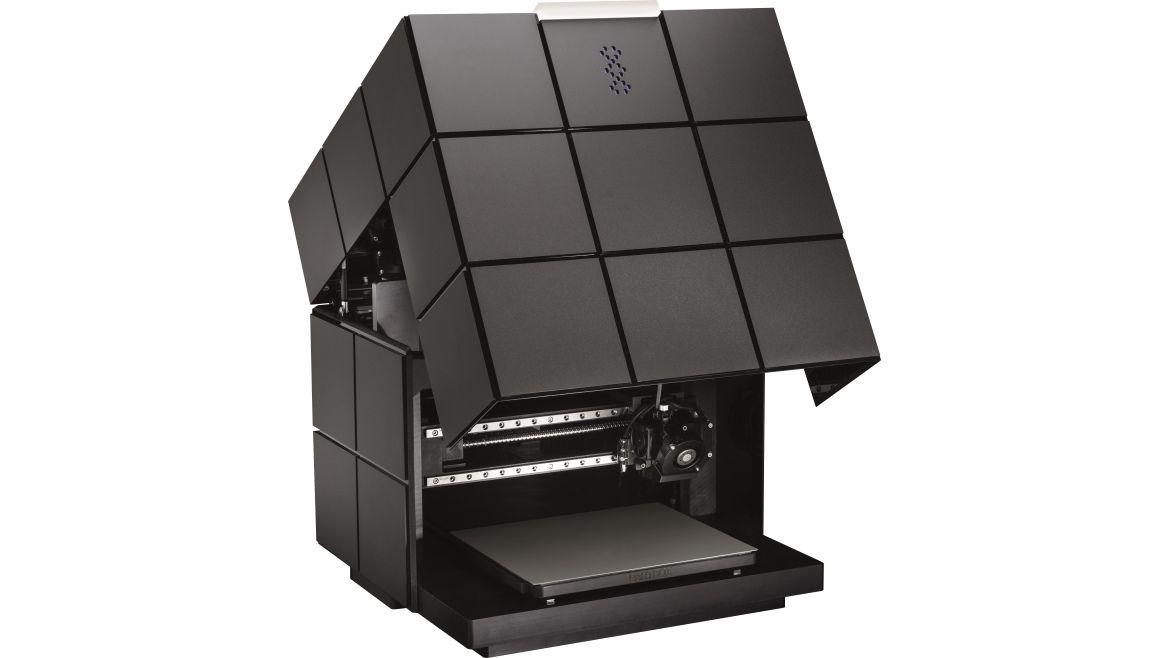 With the 3D printer Partbox, manufacturers can produce tools and spare parts on their own premises. Credit: Schubert
With the 3D printer Partbox, manufacturers can produce tools and spare parts on their own premises. Credit: Schubert
This allows customers to manufacture parts that are ready as quickly as possible, right on their own premises. This way, defective parts can be quickly replaced and customers can produce new formats for changed products themselves. Schubert also supplies the matching printing material plastic Partbox Black. It conforms to food hygiene standards, has good mechanical properties and a high resistance to temperature.
Marking Compostable Film Without Printing
In order to provide optimum solutions to companies for coding and marking their food packaging, at the Domino Laser Academy in Hamburg, experts from the company are researching and experimenting with new substrates. “We spend a lot of time analyzing new packaging materials. Due to the new European legal requirements for recycled plastics, around 95 percent of the food packaging samples we need to test are recycled or recyclable plastics. Our fiber and uv lasers offer many good solutions for coding these substrates. We are however convinced that in the coming years, the demand for compostable solutions will increase. We therefore want to be prepared to offer our customers relevant advice and solutions for these new materials”, says Dr. Stefan Stadler, team leader at the Domino Laser Academy.
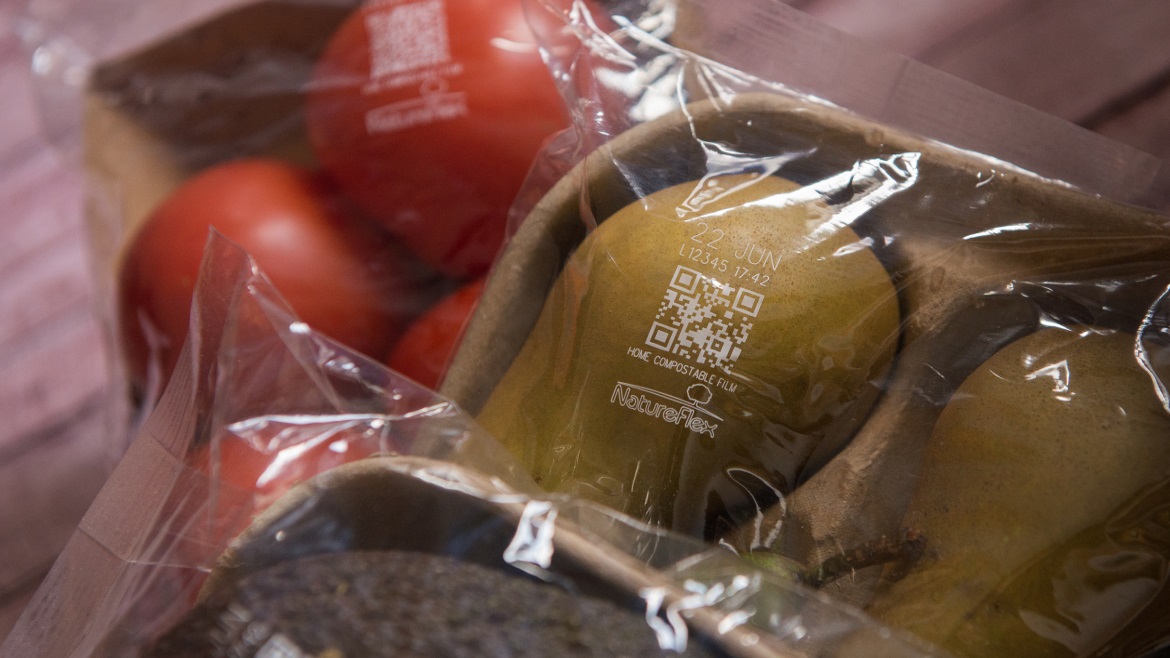 Crisp and clear: QR code applied by laser to a compostable film. Credit: Domino Germany
Crisp and clear: QR code applied by laser to a compostable film. Credit: Domino Germany
According to this focus, the laser team has tested the compostable NatureFlex film products by the Japanese company Futamura regarding their suitability for laser coding. The laser produces a crisp, white code on the film without damaging the integrity of the original film, changing the chemical composition, or affecting the properties of the moisture barrier. The print-free coding method does not require additional materials on top of the compostable substrate, which should make gaining certification for the final packaging much easier.
No Hygiene is No Option
Packaging manufacturers in the food industry are obliged to follow strict legal regulations which among other things demand a high level of hygiene. But hygiene is more than just cleaning and disinfecting. Many applications, for example in the food sector, use compressed air. If this comes into direct contact with food or is used for cleaning, it must not be contaminated with germs, either.
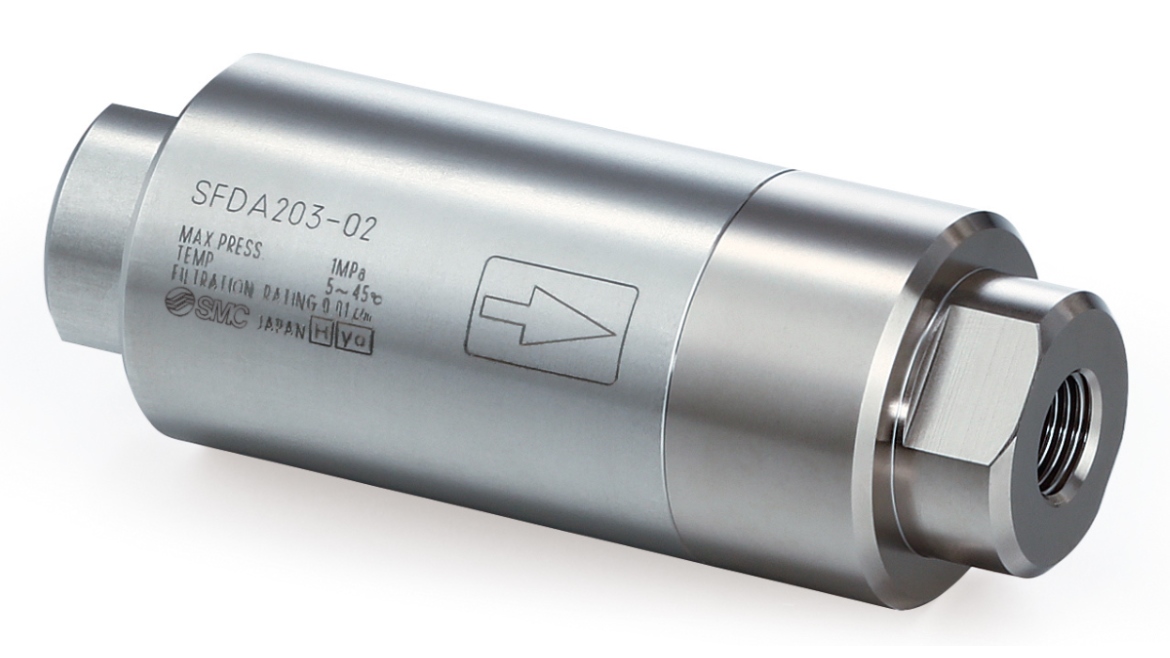 A new filter for bacteria made by SMC Deutschland drastically reduces contamination. Credit: SMC Germany
A new filter for bacteria made by SMC Deutschland drastically reduces contamination. Credit: SMC Germany
SMC Deutschland has developed a new filter for bacteria that meets the strict hygiene requirements of the food industry. With a filter performance of 99.99 percent, it makes sure that international food standards can be met. This applies to the use of compressed air to open or keep open packaging during filling, for cleaning off residual food, powder or dough, or blowing nitrogen into the packaging to prevent food from oxidizing.
Looking for a reprint of this article?
From high-res PDFs to custom plaques, order your copy today!

